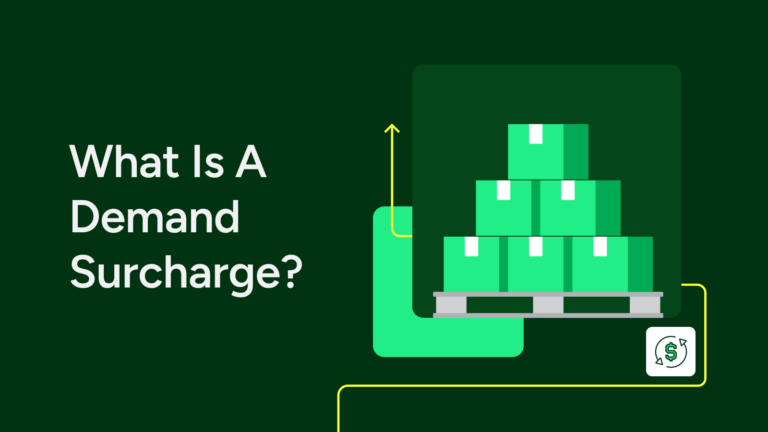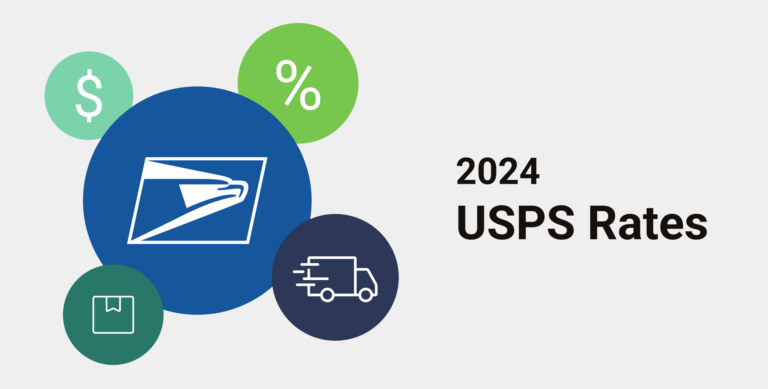How Regional Parcel Carriers Can Benefit Ecommerce Brands

Ecommerce has become the fastest-growing area of retail within the past few years and shows no signs of slowing. At present, nearly 22% of all retail sales are made digitally, and given how consumer purchasing patterns have shifted since the pandemic, that percentage will undoubtedly continue growing.
With that said, ecommerce companies need a level of agility and flexibility that goes above and beyond brick-and-mortar and big-box stores. Customer expectations have risen to greater heights, leaving little room for error. They want to place their order and be able to see exactly where it is during transit, and they want it as quickly as possible.
While the major carriers do a lot of heavy lifting for ecommerce companies, even their capacity is not infinite, especially during peak season. As a result, many ecommerce companies are turning to regional parcel carriers to help diversify their logistics network.
Regional carriers can be an excellent fit for ecommerce companies, especially direct-to-consumer brands, and can offer a number of advantages. Choosing to work with a smaller, local company can help lower costs and improve shipping times in addition to other benefits.
In this article, we will look at how regional parcel carriers work, the advantages and drawbacks of working with a regional carrier, and when you should add a regional carrier to your network.
What is a Regional Parcel Carrier?
Unlike global parcel carriers like DHL, FedEx, and UPS (to name a few), which will deliver internationally, regional carriers have a decidedly smaller operating radius. Regional parcel carriers provide fast and affordable shipping and transportation options for businesses and ecommerce brands.
Regional carriers can and will often vary in size, with some smaller operations serving specific cities and neighboring areas and others that offer multi-state coverage within the same region. Despite not having quite the same reach as larger carriers, regional carriers cover more than 85% of the US population, specializing in short-haul deliveries that range upwards of 500 miles or (typically) less.
What a regional carrier lacks in reach, they make up for in service. By servicing a smaller geographical area, regional carriers offer services that are faster, more responsive, and less expensive. By serving a smaller area, a regional parcel carrier is sometimes (region-depending) able to offset congestion experienced with major carriers, especially during peak season.
Benefits of Working with a Regional Parcel Carrier
Working with a regional parcel carrier can offer some significant advantages over working with larger national and international carriers. In particular, regional carriers can offer better rates, flexibility, and customer support, all of which can make a considerable difference in how a business can serve its customers, which is especially crucial for ecommerce sellers.
Here are four of the biggest advantages of working with a regional parcel carrier:
Lower Shipping Costs
Serving a large volume of customers in a particular region? Partnering with a regional carrier can lower your shipping costs for the vast majority of your customers. Because regional carriers serve a smaller area, they tend to have lower operating costs which directly translates to lower rates for regional contracts.
In fact, working with regional carriers can reduce shipping costs by 10% to 40% over working solely with major carriers such as UPS and FedEx.
Some regional carriers offer additional perks, such as waiving surcharges for weekend or peak season deliveries which can help stretch the annual shipping budget even further.
Shorter Delivery Times
Another advantage of a small delivery network is speed. As long as the orders are being delivered within their regional network, most carriers can offer next or even same-day deliveries.
Depending on the volume being shipped, it’s good to have different freight options. Many regional parcel carriers provide customers with the choice of full truckload (FTL), less-than-truckload (LTL), or partial truckload options. Adding a regional carrier to your shipping strategy can help optimize your shipping network, reducing both cost and transit times.
Increased Shipping Options
If you’re looking for added flexibility in your shipping networks, many regional carriers provide additional value-added services within their area of operation.
Many regional carriers are willing to accept bulk or heavy items like furniture and are able to deliver to both commercial or residential locations. Other options like white glove service can be added for high-value shipments, where the customer is expecting a little more care and attention for their delivery.
Improved Customer Service
Regional carriers tend to work with a smaller customer base which means their customers are often treated to a higher level of customer service with shorter turn-around times. Local carriers, for example, might offer multiple daily pickups or delivery to multiple addresses, which can help facilitate timely deliveries and customer fulfillment.
Drawbacks of Working with a Regional Parcel Carrier
Of course, there are some potential drawbacks to working with a regional carrier that needs to be considered. While a regional carrier can help to reduce shipping costs, they could add another layer of complexity to your logistics. Here are a few things to keep in mind:
- Poor Scalability
Adding regional carriers to your delivery assets can improve your delivery capacity during periods of high demand. However, the size of the carrier could actually limit the growth of your business. Regional carriers tend to be smaller and work with fewer physical assets than major carriers. This, in addition to their own customer base, could limit their usefulness during peak seasons.
- Could Raise Costs with Major Carriers
FedEx, UPS, and USPS will often grant shippers discounts based on a shipper’s guaranteed minimum shipment volume. By shifting that volume to a regional carrier, it could place your minimum below the required threshold, causing your brand to lose out on volume-related discounts.
- Increased Complexity
Another drawback to working with a regional carrier is that it adds to the list of items that need to be managed and tracked. Depending on the size and scope of your operations, adding additional carriers could create friction and blindspots within your supply chain, especially if the carrier is relying on outdated and incompatible technology.
- Lagging Technology
Antiquated technology doesn’t just make things difficult when managing logistics; it can also create a frustrating experience for your customers. If a regional carrier doesn’t have tracking and visibility capabilities that can be integrated with the tech stack used by your fulfillment team, it could reduce visibility for your customers.
When You Should Use a Regional Parcel Carrier
By and large, when deciding which carrier to work with, there are a few things that need to be considered, the most important of which is your customer map. If you have a high volume of shipments concentrated in a particular area, a regional carrier can help cut costs and reduce transit time.
Conversely, if your customer base is spread out or you’re frequently shipping to multiple states or provinces, a regional carrier might not be the best fit for your logistics needs. To this end, many ecommerce brands will utilize a mix of both major carriers and regional carriers to optimize their shipping strategy to provide the highest level of service for their customers.
Regional Carriers We Partner With
In much the same way that we partner with major carriers to help you find the best fit for your shipping needs, we also work with select regional carriers in the United States and Canada.
US Regional Partners
CA Regional Partners
- GLS CA
- Metroland Parcel Services
- Swyft
- FlashBox (only servicing the Greater Toronto Area)
- Shippie (only servicing the Greater Toronto Area)


